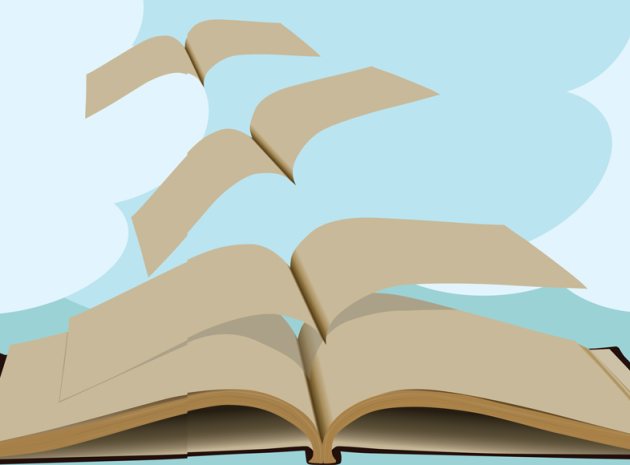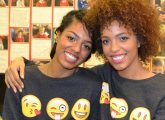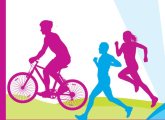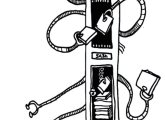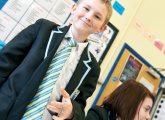Should science teachers be telling stories?
A phrase that is often used during discussions about a disputed point of fact is ‘the plural of anecdote is not data’. This is generally in response to stories about how great aunt Mabel smoked sixty Capstan Full Strength a day for ninety years and it never did her any harm, or descriptions of her sister Florence, who endured measles, mumps and polio as a child and found the experience positively bracing. What might come as a surprise, however, is that it appears the original quotation, attributed to Raymond Wolfinger sometime around 1969/1970, is: “The plural of anecdote is data.”
And of course, this makes complete sense, because an anecdote is indeed a single data point. Everyone knows someone for whom homeopathy worked or who had terrible piles until they saw a naturopath – and this sort of thing is compelling, because we love stories. As children it is how we first learn language and important lessons of life. Floppy the dog has exciting adventures involving strangely named children, phonics, magic keys and quietly subversive illustrations as he takes us along the route to literacy. From stories we learn we must: not stray from the path, beware the big bad wolf, be aware of our place in the social hierarchy and always put the egg somewhere safe to stop it getting covered with the blood of slaughtered virgins.
The trouble with anecdotes, though, is that the the ones we remember are likely to be the exceptional ones – like the neighbour’s aunt cured just at the point when all hope seemed lost. It’s easy to forget about those characterisd by the commonplace, the mundane; the stories where the standard cure worked, or everything, sadly, failed. We love the anomalous so much that we ignore the expected; the trick to science is in realising just how much we do this. After all, as Feynman said: “The first principle is that you must not fool yourself — and you are the easiest person to fool.”
Time after time
So we use the scientific method, we do experiments. We do them again, and again and again.
Each result from each experiment is a carefully controlled little anecdote, with as much of the storytelling paraphernalia as possible removed.
What science is about is not listening unquestioningly to the story of how your neighbour’s aunt was cured of cancer thanks to the intervention of a crystal healer. It’s about listening, then stripping back that story, and others like it, to its very bare essentials. And then trying to tell that story over and over again, a thousand times and more. Science doesn’t ignore anecdotes. Scientists are anecdote fiends. It’s just that we don’t want only one, because a single story can often prove deceptive. We want lots and lots of stories. Science doesn’t give you one aunt, it gives you a hundred thousand aunts. Bertram Wooster would run for the hills.
Importantly, though, none of these stories will have a face attached to them. We anonymise the subjects of trials; the beautiful princess, the talking horse and the malicious maid servant become A, B and C. Because we know just how prone we are to trying to get the story we want, to fooling ourselves; often when we do experiments we deliberately don’t let even ourselves know exactly what we are doing; we operate blinding, double blinding or even triple blinding. And that’s by no means all. Love and justice are traditionally depicted with eyes covered; the god of science would make them both look positively Argus-like.
We then tell the story of all those carefully controlled anecdotes in the most simple way possible, which often involves the language of mathematics. In writing papers we often tell our tales in the passive voice. We, in slightly strangled prose, explain exactly how the experiments were carried out, to achieve the results obtained, because heaven forfend that in the hands of others the experiments should prove irreproducible.
Science tries to take away the human element, the desire for the world to follow the narrative we want to believe. We remove the once upon a times, the wicked witches, the poisoned apples and the happily ever afters to try get to something essential.
It can make scientific papers – and textbooks – seem boring.
Natural magic
But science isn’t boring, and this is the message we need to get across to our students, and their parents, especially in the face of government rhetoric staunchly but drily focused on the necessity of increased STEM take-up for strong economic growth. Science is about the greatest stories we can possibly tell, the very essence of story telling. Children love to hear stories, they are our learning template; where fairy tales have the beginning, middle and end, science has the hypothesis, experiment and conclusion.
We are naturally inquisitive, we want to know ‘why’. Science is the method we have designed to ask the right whys, which can give us answers, and to understand what the answers mean. Keats wrongly (in more than one way) accused Newton of unweaving the rainbow, but science doesn’t detract from wonder, nor from poetry. How magical is it to know that we, as Douglas Adams put it, “...live at the bottom of a deep gravity well, on the surface of a gas covered planet going around a nuclear fireball 90 million miles away…” , and that a rainbow is formed by light reflected and refracted in a million raindrops?
Science is all about stories; because stories are how we, as a species, endeavour to make sense of the world around us and explain it to others. Teaching children science, inspiring them with a passion for the subject – rather than simply the sense of taking the most pragmatic route to future employment – is about tapping into this narrative desire present in all of us.
So, of course science teachers should tell stories; telling stories is what science is all about.
About the Author
Inspired by reading the Sherlock Holmes stories at an early age, Magdalen Wind-Mozley became a forensic scientist. Currently enthusiastically supporting her two children’s education, she is passionate about communicating the excitement of science.


